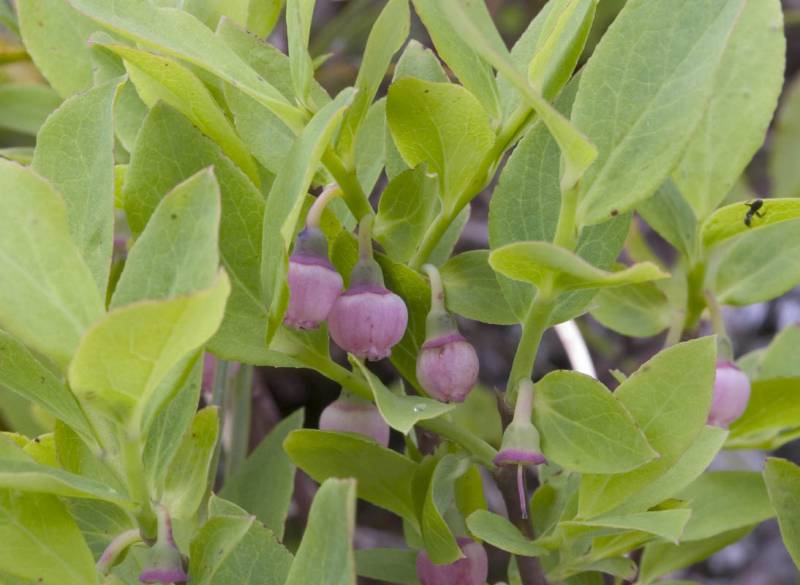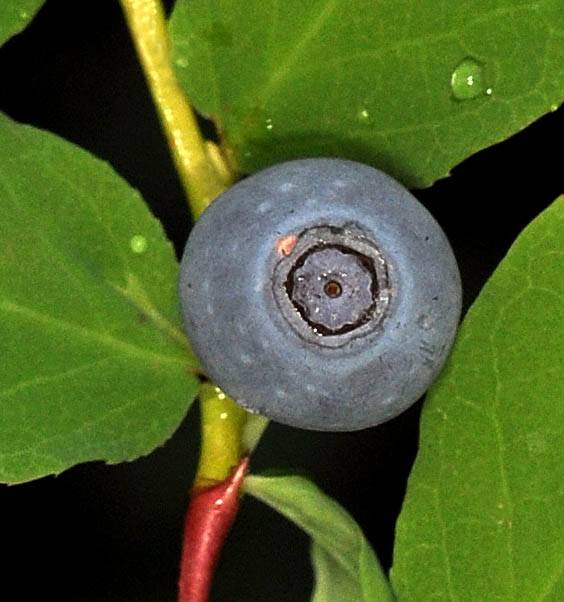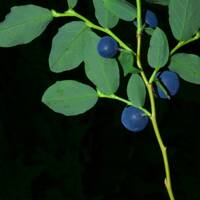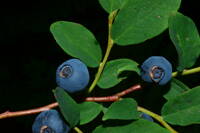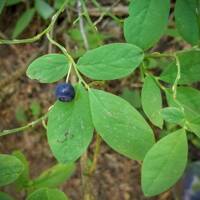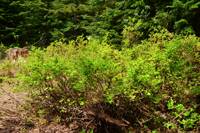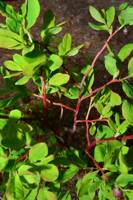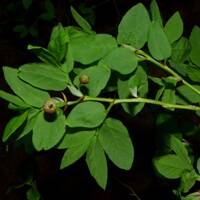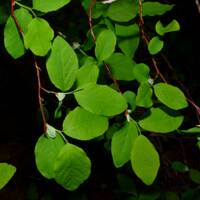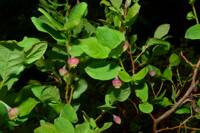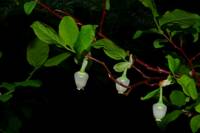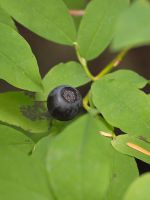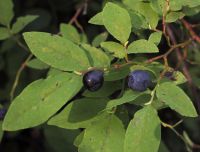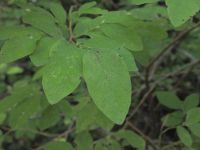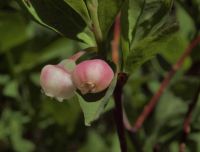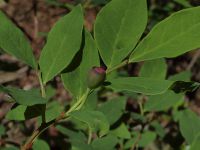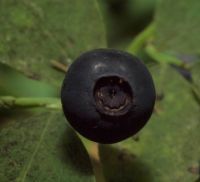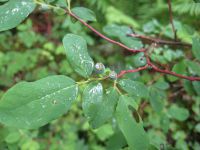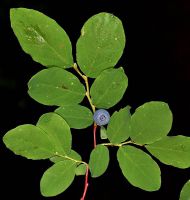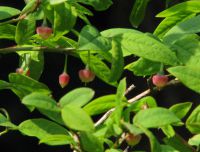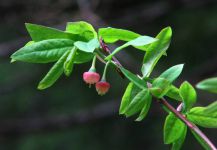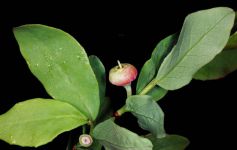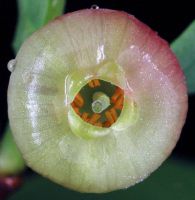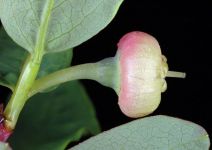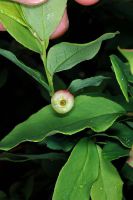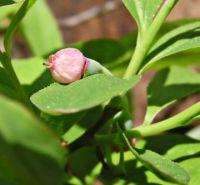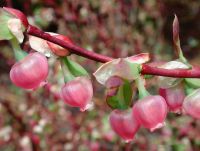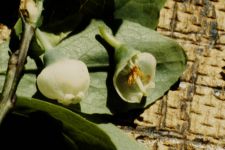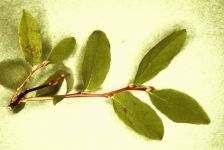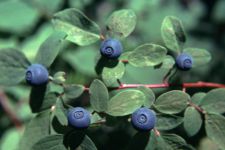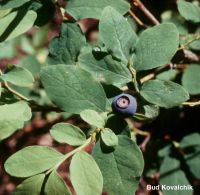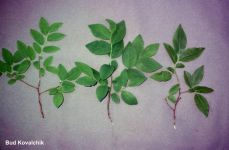Distribution: Occurring in forested and mountainous areas on both sides of the Cascades crest in Washington; Alaska to Oregon, east to Alberta and Idaho, in the Great Lakes region, and eastern Canada; eastern Asia.
Habitat: Coniferous forests and open slopes from low elevations to the subalpine.
Flowers: May-July
Origin: Native
Growth Duration: Perennial
Conservation Status: Not of concern
Pollination: Bumblebees, bees
Spreading deciduous shrub 4-10 dm. tall, flowering before the leaves have reached half their mature size; twigs yellowish-green strongly angled, glabrous, the old branches grayish.
Leaves alternate, ovate-elliptic, 2-4 cm. long, glabrous, glaucous on the lower surface, entire.
Flowers single in the axils, about 7 mm. long; pedicels 1-5 mm. long, strongly recurved in fruit, not enlarged immediately under the berry; corolla entire, pinkish, narrowly urn-shaped, longer than broad, broadest just below mid-length; anthers with dorsal awns and terminal pore-bearing tubes; ovary inferior.
Fruit a berry, purplish-black to bluish-black, 6-9 mm. long.
Publication: Cycl. 36: Vaccinium no. 2. 1817.
PNW Herbaria: Specimen records of Vaccinium ovalifolium in the Consortium of Pacific Northwest Herbaria database
WA Flora Checklist: Vaccinium ovalifolium checklist entry
OregonFlora: Vaccinium ovalifolium information
E-Flora BC: Vaccinium ovalifolium atlas page
CalPhotos: Vaccinium ovalifolium photos


